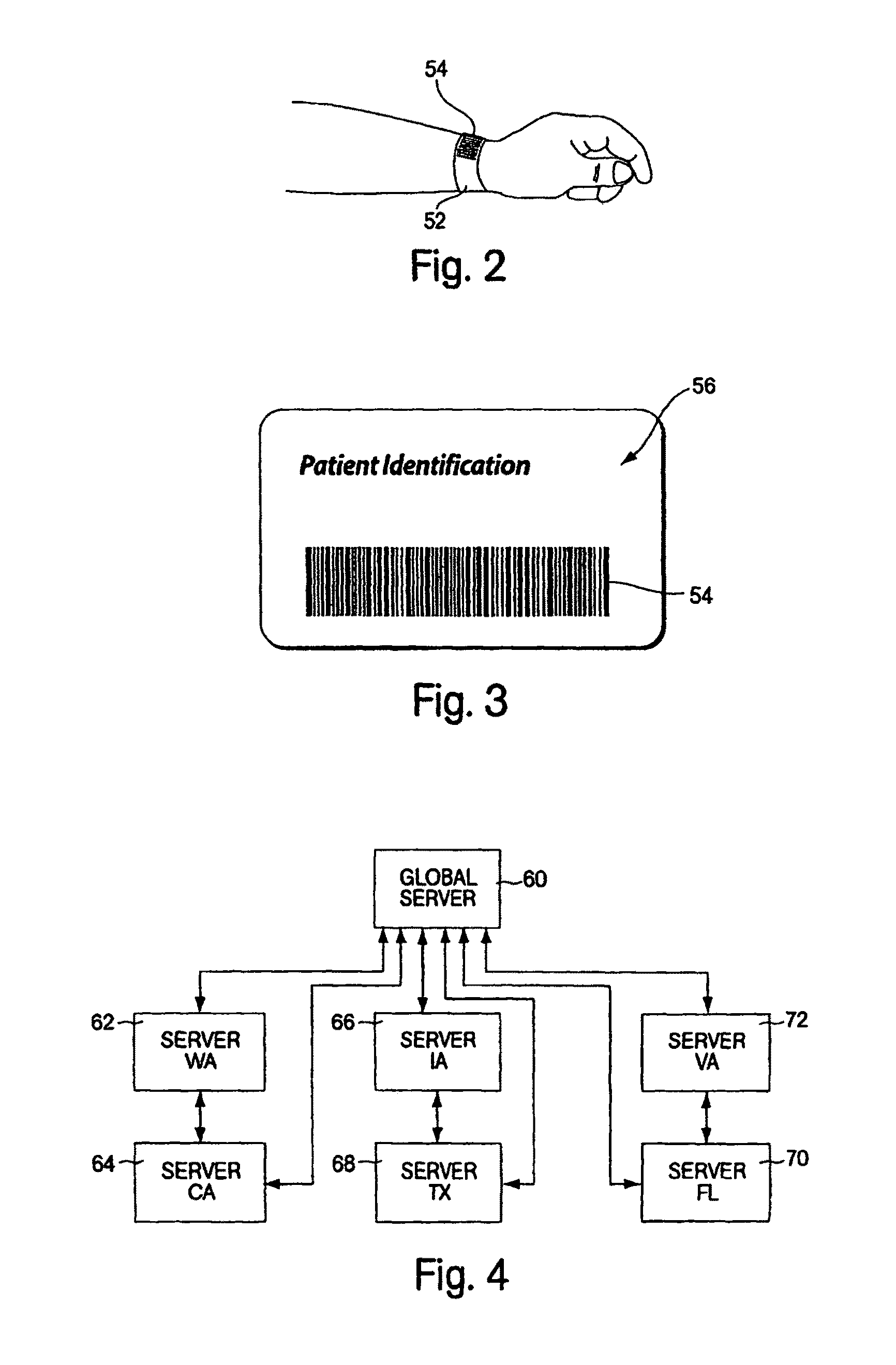Method using a global server for providing patient medical histories to assist in the delivery of emergency medical services
a global server and patient technology, applied in the field of emergency medical services, can solve the problems of large and unacceptable delays in getting patient medical history to the primary healthcare provider, the inability of emergency medical personnel to provide complete patient records at the scene, and the inability of emergency medical personnel to treat individuals in extremis. the effect of shortening the admission procedur
- Summary
- Abstract
- Description
- Claims
- Application Information
AI Technical Summary
Benefits of technology
Problems solved by technology
Method used
Image
Examples
Embodiment Construction
[0028]It will be noted while the illustrated embodiment is described in terms of access codes, in the general case the subject invention involves the realtime Internet transfer of patient histories.
[0029]With this understanding and referring now to FIG. 1, a system 10 includes an injured party 12, an access code providing device 14 which is read by an access code entry device 16, which in one embodiment can scan the access code from, for instance, a barcode carried by a bracelet or a card carried in the individual's wallet. Access code entry can also be done manually through a keypad or by whatever means is required in order to ascertain the access code associated with the injured party.
[0030]The access code is entered into a computer 18, which in the illustrated embodiment is a personal digital assistant having a screen at which a patient record 20 is accessible.
[0031]A healthcare professional, here illustrated at 22, is shown attending injured party 12 and is utilizing patient rec...
PUM
 Login to View More
Login to View More Abstract
Description
Claims
Application Information
 Login to View More
Login to View More - R&D
- Intellectual Property
- Life Sciences
- Materials
- Tech Scout
- Unparalleled Data Quality
- Higher Quality Content
- 60% Fewer Hallucinations
Browse by: Latest US Patents, China's latest patents, Technical Efficacy Thesaurus, Application Domain, Technology Topic, Popular Technical Reports.
© 2025 PatSnap. All rights reserved.Legal|Privacy policy|Modern Slavery Act Transparency Statement|Sitemap|About US| Contact US: help@patsnap.com



